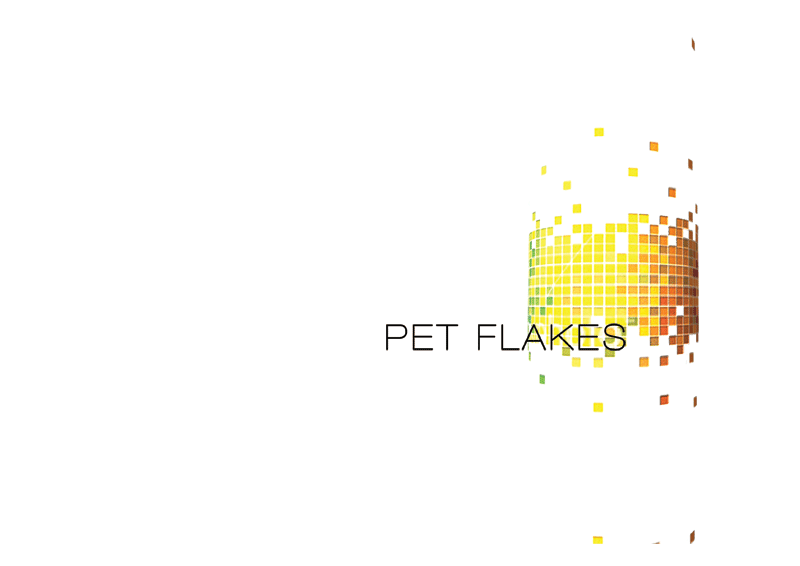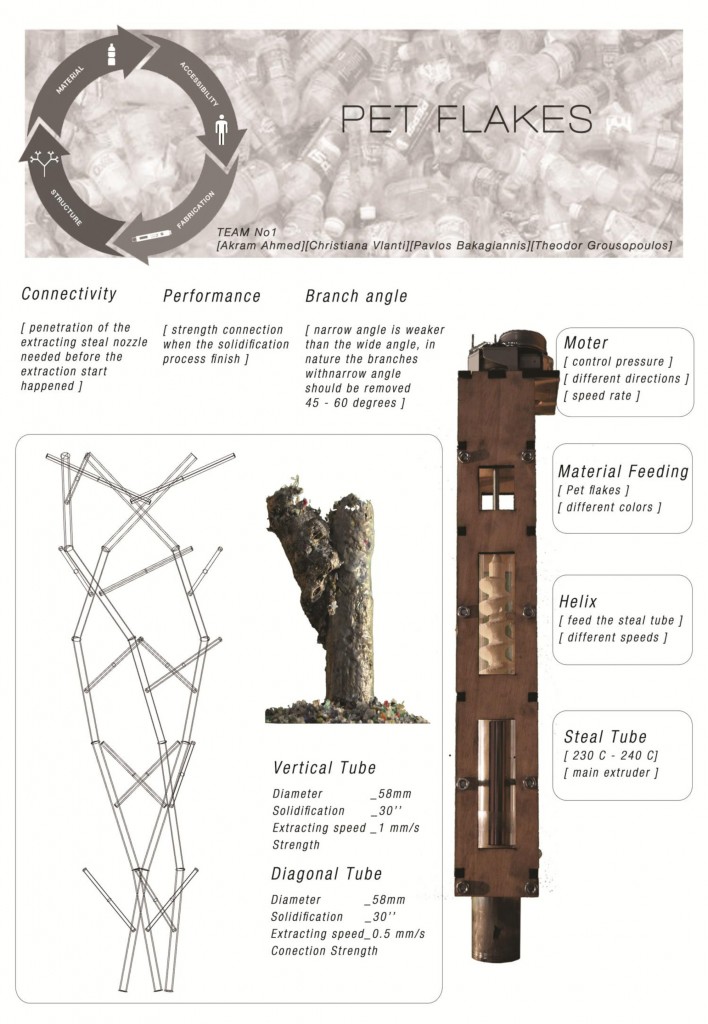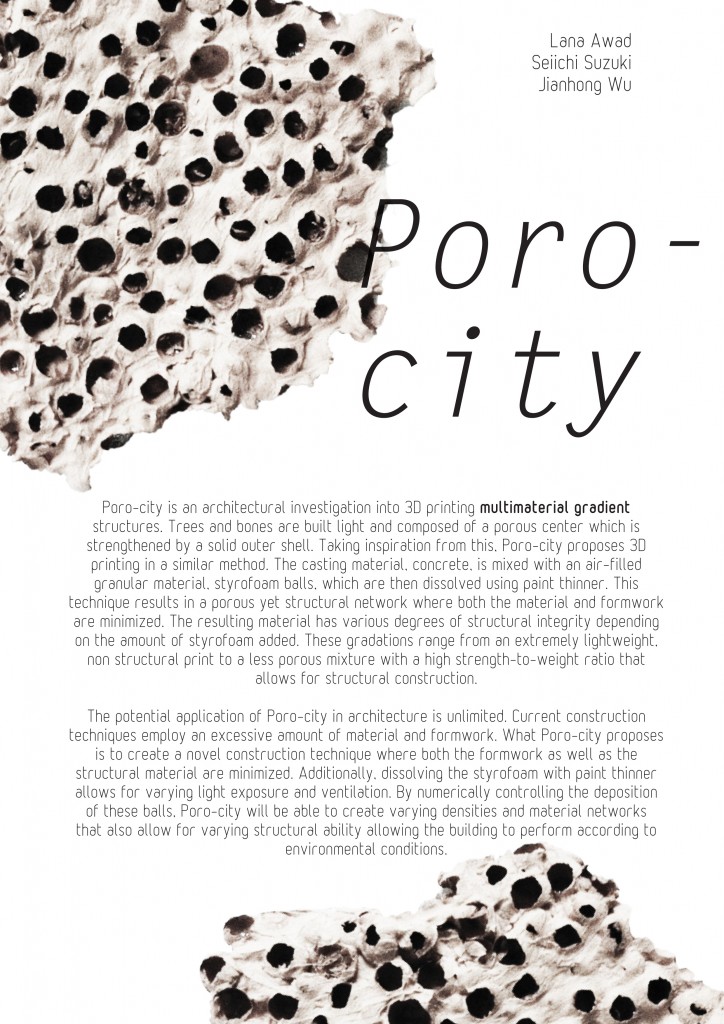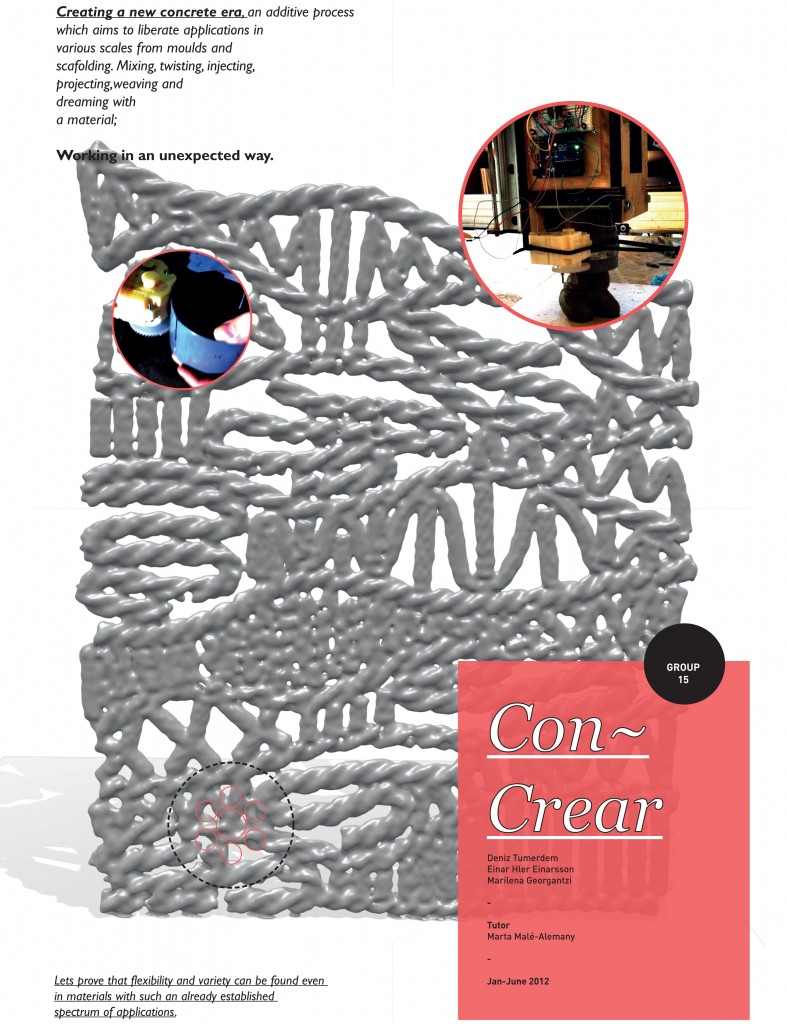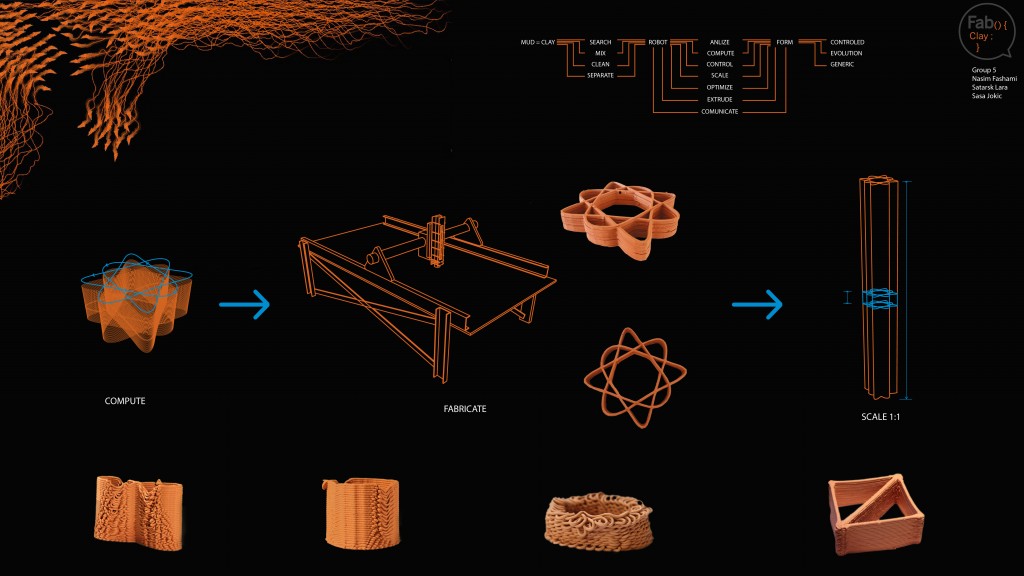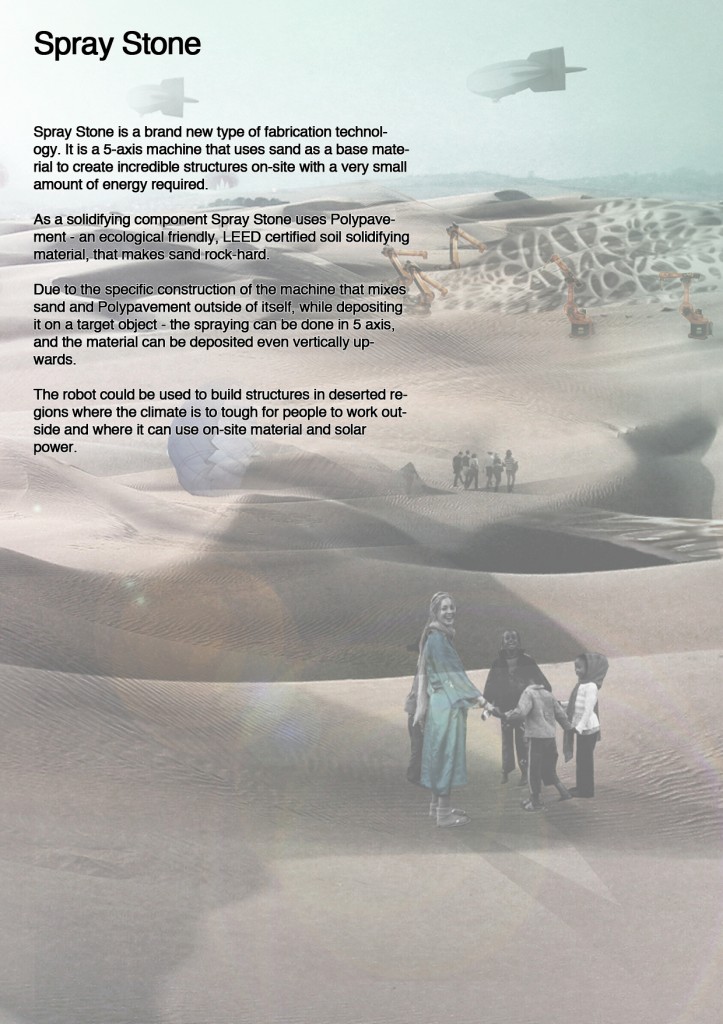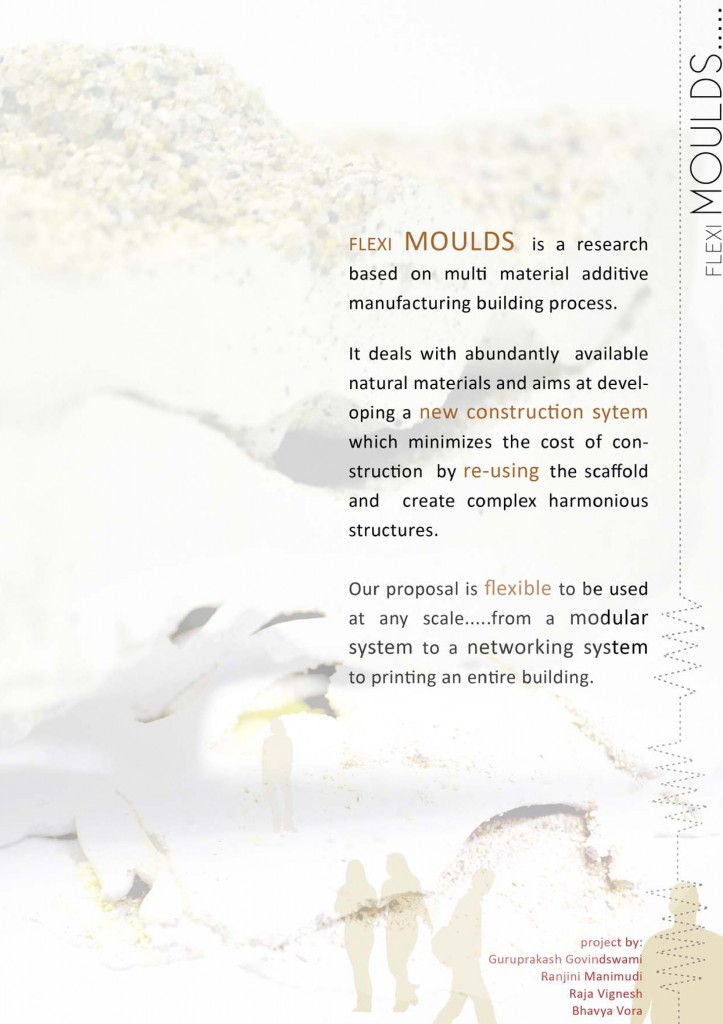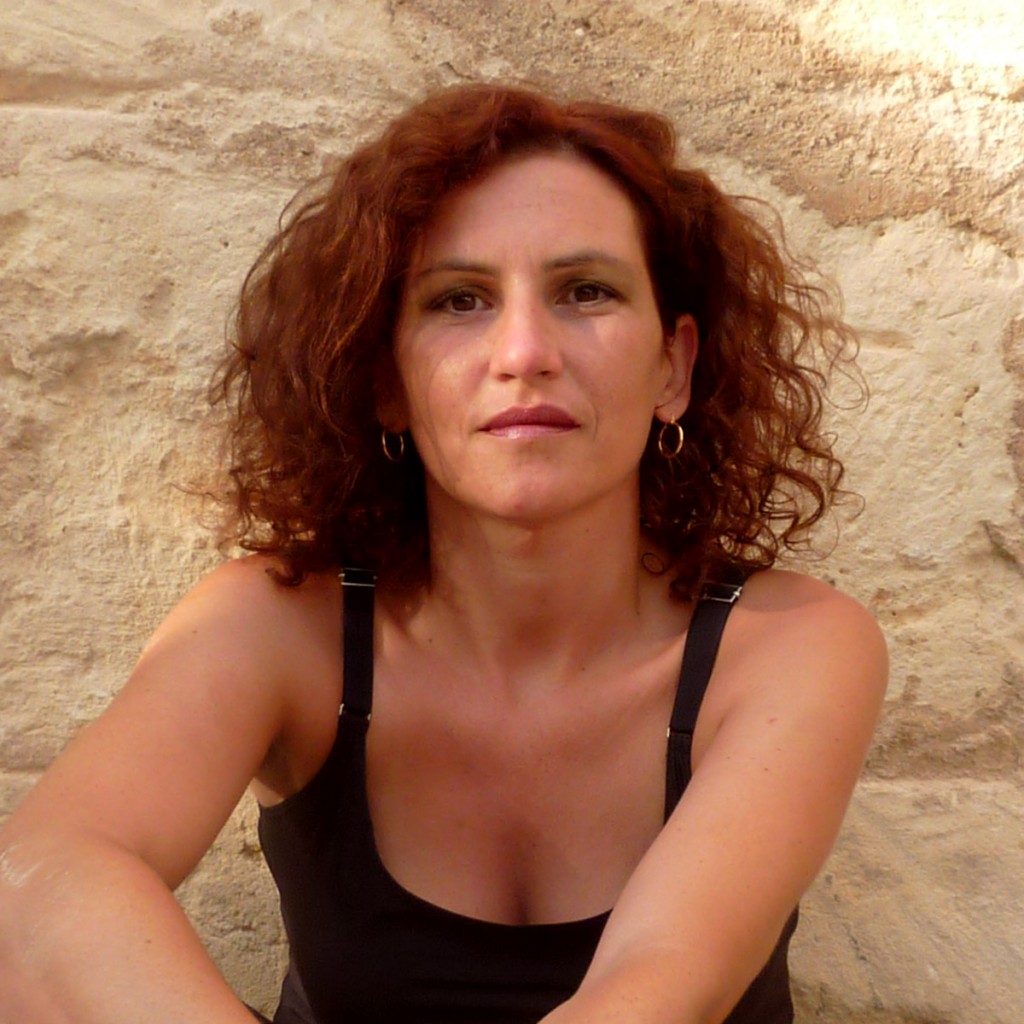Category Archives: Phase 2
PET-FLAKES
RS3 Digital Tectonics – SYLLABUS
With the advent of the information society,architecture is no longer built but manufactured. The techniques of digital production have put the architect back t the centre of the construction process because the information generated in the design process is literally used to manufacture the various parts of a building. Digital technology has thus gone beyond the representation stage to take its place precisely in the production phase of architecture. In the light of this, parametric design makes it possible to approach the architecture project on everything from the territorial scale to the urban design of the building, in an open fashion, integrating algorithms and dynamic formulations in the project-design process itself.
With the development of new software, scripting techniques can now be integrated into architectural design, transforming theold plastic principles by the insertion of mathematical logics into the project. In order to experiment with these projectdesign processes, digitally control machines are used to produce scale models of the esigns and prototypes of projects at 1:1 scale.
The IAAC has a workshop for the production of full-scale prototypes equipped with digital fabrication machines, including a 320 x 120 cm CNC cutter, a laser machine, and 3D printer.
STUDIO BRIEF RS3 – 2011-12
FABBOTS 3.0 BUILDING AUTONOMY
Continuing on the research from the past 2 editions, the Digital Tectonics Research Studio 2011-12 will investigate the workflow between computational design and material production methods, exploring the relationship between design inputs and computer programmable devices that can be used for the production of building structures and/or components. Challenging the traditional norms of linear file-to-factory production processes, the studio will study the potentials of linking the programming of specific material formations and machinic behaviour in real time, exploring the generative design opportunities that may emerge from this convergence.
With support tutorials and exercises focusing on the creation of custom-designed innovative hardware devices that incorporate sensory inputs and stepper motor control, the studio aims to propose alternatives to existing methods of digital fabrication to be deployed on-site. As these fabrication devices will enable a direct response to sensory inputs, systems of behavioural rules can be considered to influence the method of creating building elements or structures. Rather than scripting geometrical patterns of formation as in traditional uses of digital fabrication, behavioural rule systems can be used to direct machinic fabrication towards certain performance criteria scenarios, thus generating emergent material configurations that are not guided from a pre-concieved design. Using a setup consisting of design scripts, machine programming, a custom designed fabrication device and specific method of material formation, students teams will choreograph the creation of material structures that demonstrate that their formation has been influenced by external inputs like sound, light, temperature etc.
The studio research will focus on how locality allows for hyper-specific outcomes, as the variables of the specific context (temperature, solar exposure, prevailing winds, etc.) are simultaneously embedded and recorded in the material result. Considering that the production processes are dependent on external factors on site, recorded data will be physically translated and materialized in outcomes that contain both programmed design intentions and information from the environment. As such, material formations will be emergent and ‘harvested’ from the context. Moreover, the studio will emphasize the global preoccupation with dwindling energy resources, by encouraging formation methods and devices that can employ local materials and be powered by renewable sources of energy.
FACULTY
STUDIO FACULTY:
MARTA MALÉ-ALEMANY (Senior Studio Faculty)
JORDI PORTELL (Assistant)
SUPPORT SEMINAR 1:
COMPUTATION FOR OPTIMIZATION
Taught by SANTIAGO MARTÍN LAGUNA
Through a global multidisciplinary overview, the Studio Support Seminar 1 will help define the processes to optimize an idea; starting from the concept and decision making and continuing with digital and generative design tools to get the best solution for each problem. Looking at nature to inspire the evolutionary optimization processes, students will learn how to modelize and simulate physical and geometrical behaviours, which ought to help them in the development their projects.
SUPPORT SEMINAR 2:
Coordinated by MARTA MALÉ-ALEMANY + JORDI PORTELL
The Studio Support Seminar 2 will provide the fundamental research content, to complement and develop the proposed studio research agenda. Classes are conceived as a series of invited guest lectures by academics and professionals with various fields of expertise. Invited guests may include:
JAVIER PEÑA (FAD Matter / Additive Manufacturing)
MAGÍ GALINDO (LEITAT Technological Center / Additive Manufacturing)
CARLOS GARCÍA PANDO (PRODINTEC Foundation / Materials for Additive Manufacturing)
GUSTAVO MOSCARDO (KUKA Robotics / Robotics)
SANTIAGO MARTÍN GONZÁLEZ (University of Oviedo / Artificial Vision)
JAIME PEINADOR (Director AAGE HEMPEL / Electronics and Mechanical engineering)
JESUS HERRERA (FREMM Murcia / Electronics and Mechanical engineering)
+ others
Marta Malé- Alamany leadind the RS3- Digital Tectonics studio
Marta Malé-Alemany is a registered architect from Barcelona.She has taught architectural design in several well-known Universities in the US (MIT, U.PENN, UCLA, SCI-ARC, and others) and been a Course Master Tutor in the Design Research Laboratory (DRL) at the AA (Architectural Association) in London. Her academic research focuses on the conceptual and material opportunities that emerge from the use of digital design and fabrication technologies for the production of architecture. She graduated from ETSAV-UPC (Barcelona, 96), holds a Master Degree in Advanced Architectural Design from Columbia University (New York, 97) and is currently a PhD candidate at the ETSAB-UPC (Barcelona), investigating the potential of large-sale rapid manufacturing technologies to innovate building construction.
RS3 Collaborators :
SANTIAGO MARTIN / VORTICA / Support Seminar Faculty (Optimization)
Santiago Martín was born in Valladolid, Spain on 1984. A year after his graduation at Oviedo University in Mechanical Engineering (2008), he started his Master´s Degree on Industrial Design Management (Oviedo University 2007/09). Then, Santiago started to work at Prodintec Foundation, Technologic Center of Asturias (Gijón, Spain 2008/10) as designer for additive manufacturing. At the same time, he was postgraduate in Mechanical Engineering, Design, Construction and Fabrication (Oviedo University 2009/10). He also has participated as lecturer in numerous university courses related with industrial design methodology, design tools and rapid manufacturing. He actually co-founded vortica: cognitive engineering for design (2010) as an ambitious project focused on generative engineering and generative product design and development behind a real multidisciplinary approach.Santiago loves to be in touch with different profiles, as the only way to crew in a personal and professional way. He also loves running and cycling.
GUILLEM CAMPRODON / IAAC, Support Seminar Faculty (Physical Computing)
Guillem Camprodon is an industrial designer working in projects that range from the Internet of Things to Digital Fabrication. He owns a Bachelor in Arts of Design by the Elisava Design School and the Fab Academy diploma by the Fab Lab Network in collaboration with the MIT. He has been involved with IAAC and the Fab Lab Bcn since the Fab Lab House project and he is currently a researcher in the Projects department, where he helps developing new services and technologies that involve Architecture, Energy efficiency and the Internet. Before he worked as an interaction designer at Bosch und Siemens Hausgeräte and he spent a year as an exchange student at the Industrial Design Department at UdK Berlin.
JORDI PORTELL / IAAC, Design Assistant Faculty
Jordi Portell, Born in 1970 in Vic (Barcelona), has a degree in architecture by the Escola Tècnica Superior d’Arquitectura de Barcelona (ETSAB-UPC) and a Master in Advanced Architecture (MAA) by the Institute for Advanced Architecture of Catalonia (IAAC). He has been working as freelance architect in Germany and Spain since 2000 mainly in the fields of housing and public facilities but has also made incursions in industrial design, computer programming and art installation.
MIQUEL LLOVERAS/ IAAC, Physical Computing Assistant Faculty
Collaborators:

